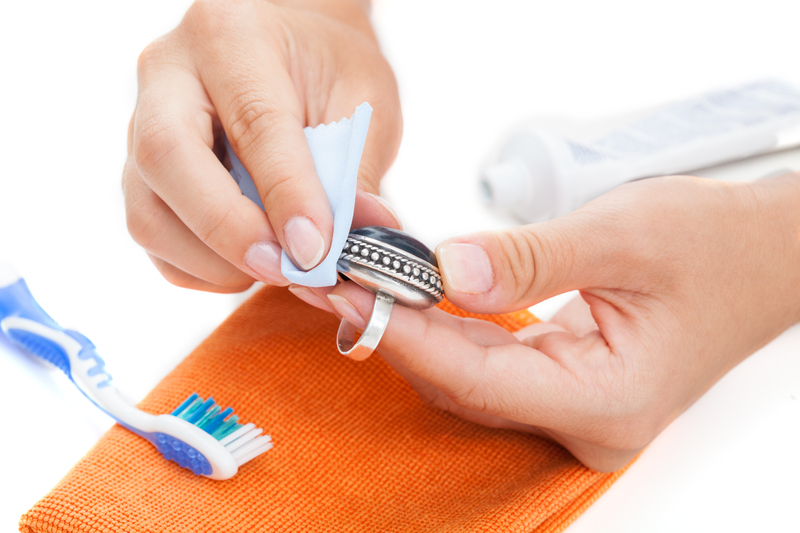Transform Your Stovetop: Erase Stubborn Burnt Residue
Posted on 11/06/2025
Transform Your Stovetop: Erase Stubborn Burnt Residue
If you're a home cook or even just a casual kitchen user, you know that the stovetop is prone to messes. Burnt food spills, splatters of sticky sauces, and greasy residue can mar the surface of your once-pristine stovetop. Don't worry--transforming your stovetop and erasing stubborn burnt residue is absolutely possible! In this comprehensive guide, you'll discover proven, effective techniques to restore the brilliance of your stovetop, along with expert cleaning tips, product recommendations, and preventative measures to keep your appliance spotless.

Why Does Burnt Residue Stick to Stovetops?
Before we dive into removing burnt residue from your stovetop, let's understand why it happens. Cooking at high temperatures, sugary spills, and greasy frying often result in food particles and liquids burning onto the surface. Over time, these stains can accumulate, especially if not cleaned promptly. The heat bonds the residue to the surface, making removal challenging--but not impossible.
The Importance of a Clean Stovetop
- Appearance: A sparkling stovetop enhances the look of your kitchen.
- Functionality: Clean burners provide even heat, improving cooking results.
- Safety: Burnt residue can become a fire hazard if allowed to accumulate.
- Longevity: Regular cleaning extends the life of your appliance.
Ready to turn back the clock on your cooktop? Let's jump in!
Supplies You'll Need to Remove Burnt-on Stovetop Stains
- Baking soda
- White vinegar
- Lemon juice
- Non-abrasive scrubbing pads
- Microfiber cloths
- Razor blade scraper (for glass/ceramic tops)
- Stovetop cleaning solution (optional)
- Rubber gloves (to protect your hands)
Don't Forget: Always check your appliance's manual for any manufacturer-specific cleaning recommendations or restrictions!
Step-by-Step Guide to Removing Stubborn Burnt Residue
1. Prep Your Stovetop
- Ensure your stovetop is cool before starting.
- Remove any grates, burners, or removable knobs - soak these in warm soapy water.
- Wipe away loose crumbs or debris with a microfiber cloth.
2. Apply a Baking Soda Paste
- In a small bowl, mix two parts baking soda and one part water to create a thick paste.
- Spread the paste liberally over burnt-on stains, focusing on the worst areas.
- Let the mixture sit for 15-30 minutes. This allows the baking soda to break down the residue.
3. Tackle the Burnt Residue
- After soaking, use a damp non-abrasive scrubbing pad or microfiber cloth to work the paste into the stain.
- For glass or ceramic surfaces, gently scrape stubborn spots with a razor blade, holding it at a shallow angle to avoid scratches.
- Wipe off residue with a clean, damp cloth.
4. Use Vinegar for Extra Cleaning Power
- Spray white vinegar over the affected area. Allow it to fizz for a minute--this reaction helps lift tough burnt stains.
- Gently scrub again and wipe clean.
5. Try Lemon Juice for a Fresh Finish
- Apply lemon juice to persistent stains for additional lifting power and a fresh scent.
- Leave on for 5-10 minutes, then scrub and wipe clean.
6. For Ultra Stubborn Stovetop Stains
- If residue remains, use a specialized stovetop cleaner following package instructions.
- Repeat the baking soda paste method as needed for tough spots.
7. Rinse and Dry
- After all residue is gone, rinse the surface with a clean, damp cloth.
- Buff dry with a microfiber towel for a streak-free shine.
Cleaning Different Types of Stovetops
A. Glass & Ceramic Stovetops
- Use only non-abrasive cleaners and tools to avoid scratches.
- Razor blade scrapers are safe when handled carefully and used flat against the surface.
- A mixture of baking soda and vinegar is very effective here.
B. Gas Stovetops
- Remove grates and burner heads; soak in soapy water and scrub with a soft brush.
- Clean the stovetop surface as described above.
- Ensure all parts are completely dry before reassembling.
C. Electric Coil Stovetops
- Lift out the coils if possible, wipe away crumbs underneath.
- Never submerge the electrical elements in water.
- Clean drip pans separately using baking soda and vinegar methods.
Top Store-Bought Products to Remove Burnt Stovetop Residue
While DIY cleaning methods are effective, sometimes you need the muscle of a commercial cleaner. Here are some popular and highly rated stovetop cleaners:
- Weiman Glass Cook Top Cleaner & Polish
- Bar Keepers Friend Cooktop Cleaner
- Affresh Cooktop Cleaning Kit
- Mr. Clean Magic Eraser (great for tricky spots!)
- Cerama Bryte Cooktop Cleaner
Always read and follow the manufacturer's instructions. Test products on a small, inconspicuous area first to avoid unwanted reactions.
Common Mistakes to Avoid When Cleaning Stove Tops
- Using steel wool or harsh abrasives: These can scratch or damage the delicate surfaces of glass and ceramic cooktops.
- Soaking electrical parts: Water can irreparably harm electric coils or control knobs.
- Ignoring manufacturer guidelines: Always check your stovetop's manual. Certain chemicals or tools may void your warranty.
- Letting stains sit too long: Clean spills as soon as possible to prevent them from baking on.
Preventing Future Burnt Residue on Your Stovetop
Maintaining a clean cooktop is easier than you think! Try these tips to stop burnt residue before it starts:
- Wipe down the stovetop after every use, even if spills seem minor.
- Use spill guards or boil-over protectors when making soups or starchy dishes.
- Clean up grease splatters immediately with a damp cloth.
- Use the correct size pots and pans to minimize spillage.
- Deep clean weekly, even if no visible messes are present.
Natural Solutions vs. Chemical Cleaners - Which Should You Choose?
Natural stovetop cleaning methods--like baking soda, vinegar, and lemon--are safe, effective, non-toxic, and environmentally friendly. They are generally gentle on surfaces and inexpensive. However, for extremely stubborn burnt residue, a commercial stovetop cleaner may offer superior results in less time.
For most users, a combination of both works best: start with natural solutions, then use a specialty product if extra strength is required. Remember to ventilate your space whenever using chemical cleaners and avoid mixing products.
Stovetop Cleaning Tools: What Works Best?
- Microfiber cloths: Soft, absorbent, and perfect for streak-free finishes.
- Non-abrasive sponges: They remove residue without scratching your surface.
- Razor blade scrapers: Ideal for glass and ceramic cooktops (with care).
- Old toothbrushes: Great for corners and hard-to-reach areas.
- Specialty stovetop pads: Designed to cut through burnt-on food without damage.

Frequently Asked Questions about Erasing Burnt Residue from Stovetops
How often should I deep-clean my stovetop?
For optimal performance and appearance, deep clean your stovetop at least once a week. Light daily wiping prevents build-up and takes just minutes.
Can I use bleach to clean my stovetop?
Bleach is generally not recommended--especially on glass or ceramic surfaces. It can discolor or damage the finish, and inhaling fumes while heating is unsafe. Use gentler solutions whenever possible.
What if the residue just won't budge?
Try repeating the baking soda or specialty cleaner method, letting cleaning pastes sit for longer. Gently scrape with a razor blade scraper if safe for your stovetop type. For exceptionally stubborn burnt residue, consider professional appliance cleaning services.
How do I protect my stovetop after cleaning?
Once clean, polish with a microfiber cloth and avoid using the stovetop for an hour to allow any cleaners to fully dry. Consider applying a stove top protector mat or using oil-resistant splatter guards during cooking.
Conclusion: Enjoy a Spotless, Transformed Stovetop
Burnt-on messes don't have to be permanent! With the right supplies, proper technique, and a little patience, you can erase stubborn burnt residue from your stovetop and make it look brand new. Whether you're handling glass, ceramic, gas, or electric models, the steps outlined above will help you transform your cooktop quickly and safely.
Remember: The secret to a gleaming, like-new stovetop is consistent cleaning and prompt attention to spills. Try incorporating a quick wipe-down into your daily kitchen routine, and deep clean at regular intervals. Experiment with both natural and commercial cleaners to find what works best for your unique situation.
Now, it's your turn! Gather your supplies, roll up your sleeves, and experience a kitchen transformation. Erase burnt residue from your stovetop and enjoy your sparkling centerpiece each time you cook.
Did you find these stovetop cleaning tips helpful?
If so, share this article with friends and let us know your own secrets for how you remove stubborn burnt residue from your stovetop!




